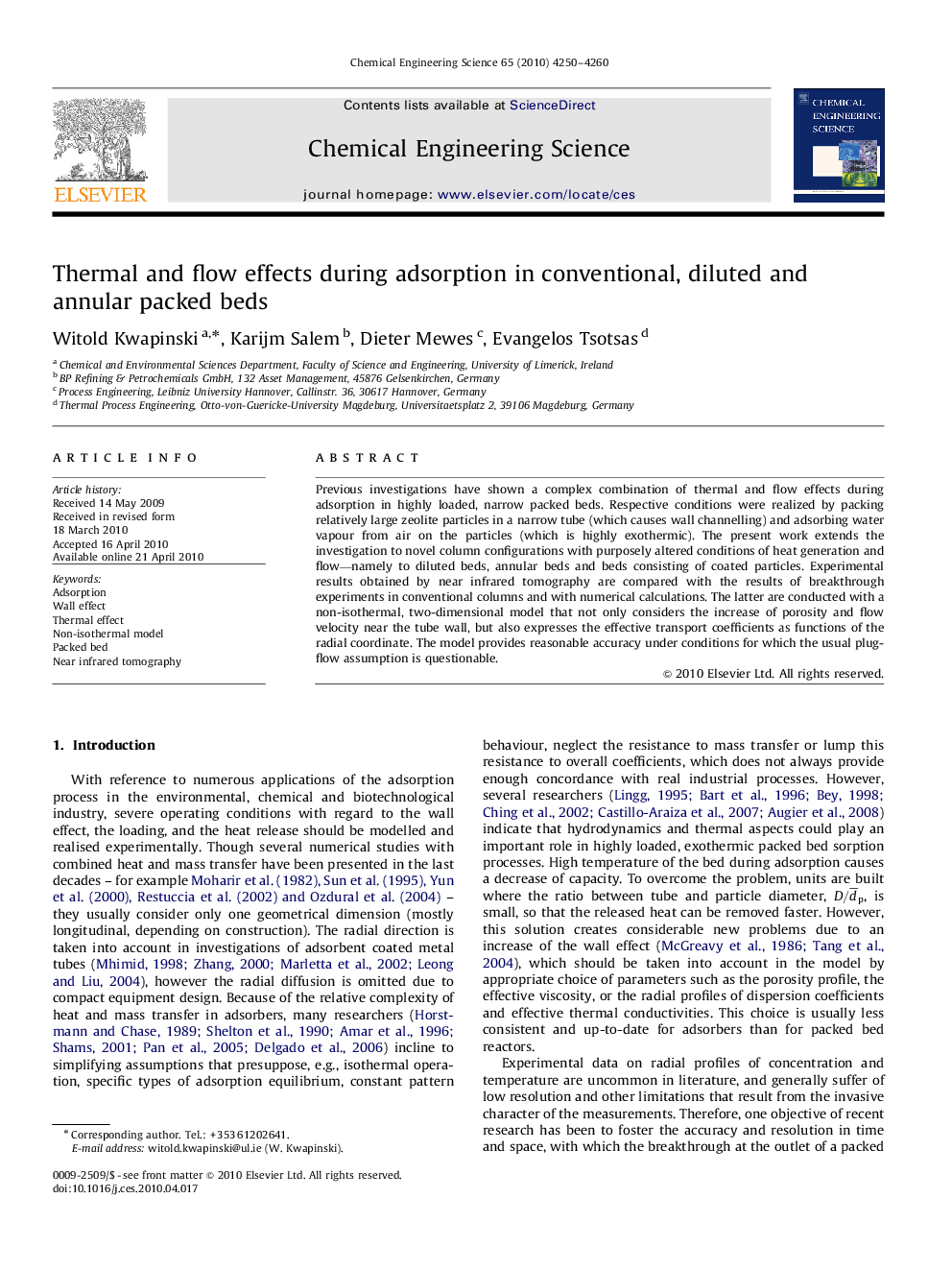| Article ID | Journal | Published Year | Pages | File Type |
|---|---|---|---|---|
| 156296 | Chemical Engineering Science | 2010 | 11 Pages |
Previous investigations have shown a complex combination of thermal and flow effects during adsorption in highly loaded, narrow packed beds. Respective conditions were realized by packing relatively large zeolite particles in a narrow tube (which causes wall channelling) and adsorbing water vapour from air on the particles (which is highly exothermic). The present work extends the investigation to novel column configurations with purposely altered conditions of heat generation and flow—namely to diluted beds, annular beds and beds consisting of coated particles. Experimental results obtained by near infrared tomography are compared with the results of breakthrough experiments in conventional columns and with numerical calculations. The latter are conducted with a non-isothermal, two-dimensional model that not only considers the increase of porosity and flow velocity near the tube wall, but also expresses the effective transport coefficients as functions of the radial coordinate. The model provides reasonable accuracy under conditions for which the usual plug-flow assumption is questionable.
